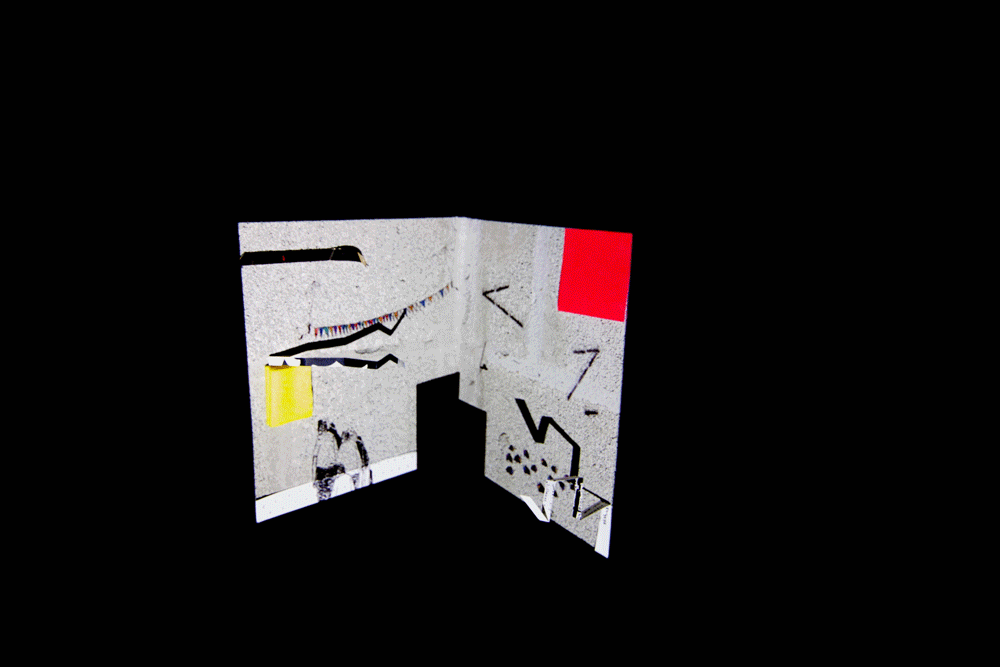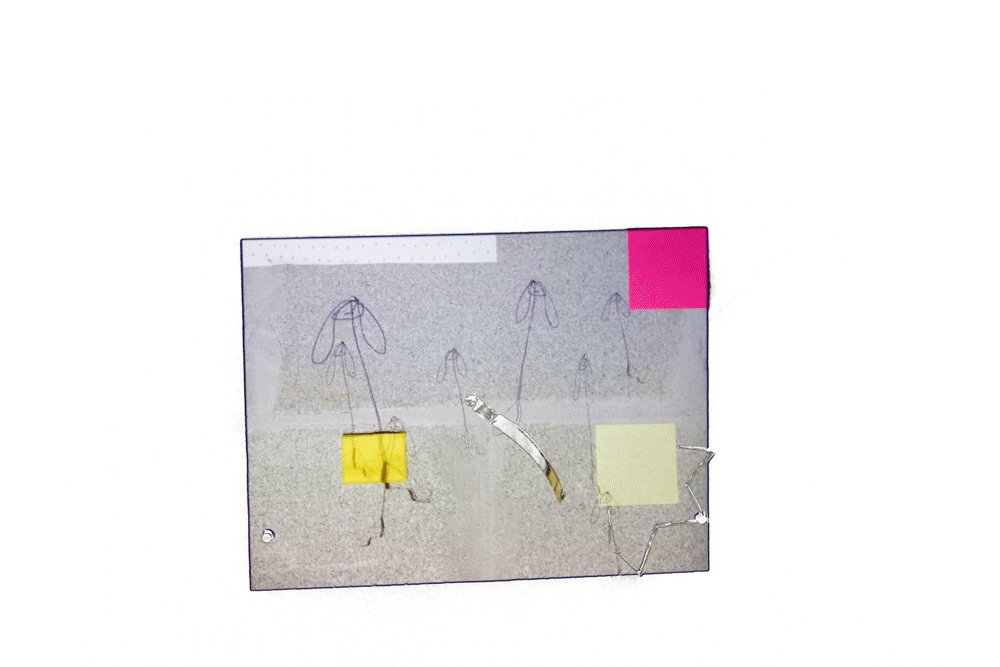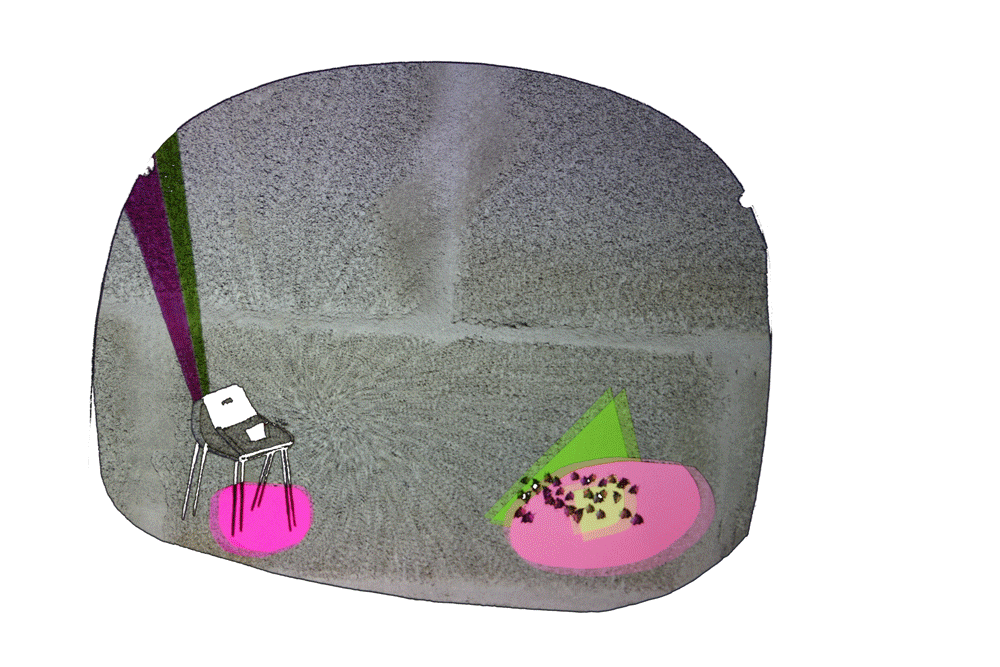Summary of Independent Study
Over the course of this last semester I was given the opportunity to further my investigations into perception, space and image through the maker/space residency at Charles Street Video. Using MadMapper projection mapping software in conjunction with paper (notes made from my studies) from the past couple years, I was able to explore a new way of iterating with the analog and digital materials of my practice. It began with the impulse to gesture and draw in space. Physically sitting with various forms of my drawn content( projected, animated, cut, folded and twisted I was able to see how iterating is dependent on parameters of space and how gesture transforms meaning and aesthetic through difference in material and surface.
Using cut and folded paper notes, as well as readily available artifacts of the space as a framing structure, including wall surface, I was able to projection in, on and around materials that speak directly to aspects of my practice. Using things like paper, tape, audio cables, post it notes and varied wall surfaces I began to see a correlation between how my words, materials and images were reacting in external spaces and how my perception in an internal space tends to build in layers similarly through input, restrictions and accessibility. I could see how gesture and limitations begin to frame a practice much like residual marks and experience can frame perception. In one of his most pivotal works ‘The Poetics of Space’ Gaston Bachelard states, “A living creature fills an empty refuge, images inhabit, and all corners are haunted, if not inhabited.” These ‘tests’ as I am calling them were very reactionary in nature, thinking of the space, material and gesture as reciprocal layers of a perceptual image. Different types of spaces such as corners or fragmented structures tended to show the most potential.
Thinking in these fragmented images is very much a part of my perceptual reality and much like my internal perception, the layers of iterated making begin to unpack and form new connections through own material experience and associations. Allowing myself the time to work through my ideas and reading Bachelard and James J. Gibson’s ‘The Ecological Approach to Visual Perception,’ I began to construct a map or plan for both my exhibition and writing for my thesis. In his introduction to Bachelard’s text Richard Kearney says, “Poetics comes from poiesis, meaning “to make,” and for Bachelard this is a two way process: we are made by material images that we remake in our own turn. We are inhabited by deep imaginings—visual and verbal, auditor and tactile—that we reinhabit in our own unique way.” Thinking of poetics, perception and space in this way has provided me with a concentrated direction for my research that is much more encompassing than previously iterated. Right now I am undergoing the process of testing a few ideas in different material and form, without going into full description, the work is starting to stretch from projected drawn image, to 3D modelling and casting, to sound and drawing in space with material. My intention is unravelling gesture in my practice. Drawing and gesture function as a propellant for work in thought and practice. The reflective space created allows for otherness to emerge. Mark making, variation and framing of image in space as physical and perceptual material, hopefully can reflect the poetic and polyphonic nature of merging experience and thought in process.
CSV Maker Space Residency Test images:
Thinking through image as space and space as image: Working with paper, projection mapping and space intervention as a way to map digital and analogous mark making as space or canvas. Using my physical notes from this thesis and other artifacts of process, I hope to work through my relationship to space; thinking about how past and present experience act as canvas for new images through residual inhabiting internal and external abodes. I have been working through tests through several formal investigations of space. These are frame, shape, material and movement; working with the physicality of space and objects of daily use to create new ways of understanding/viewing space.














